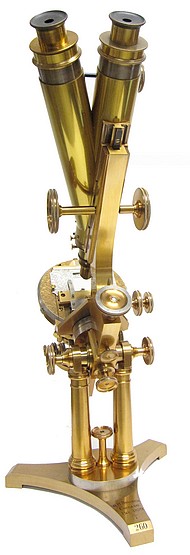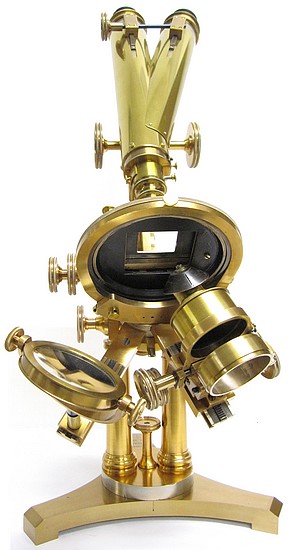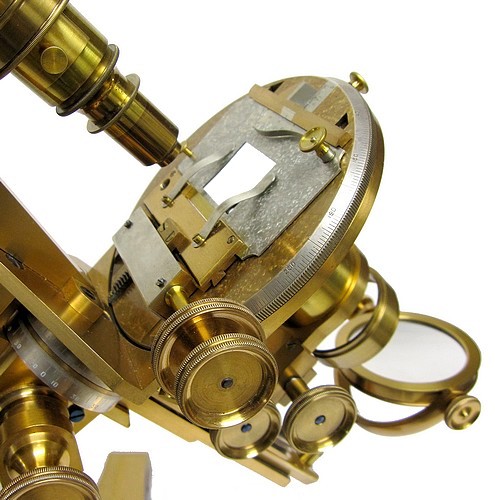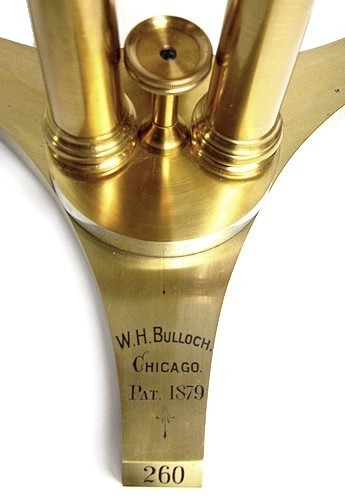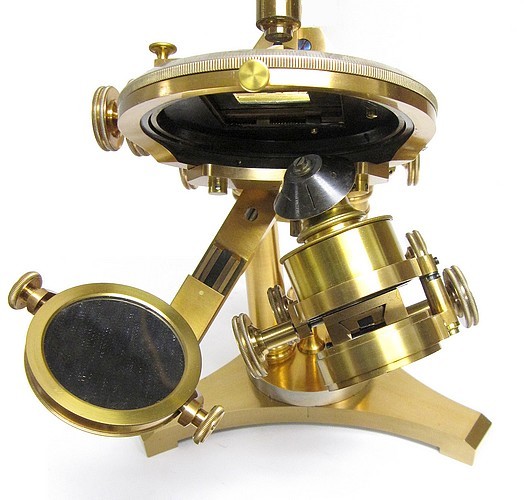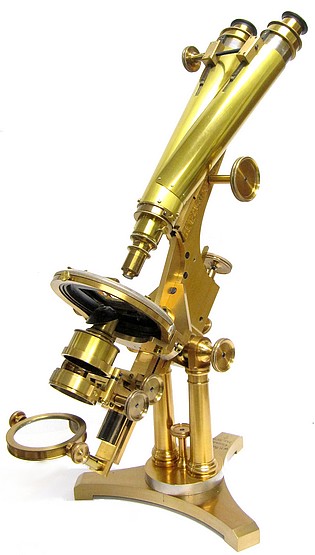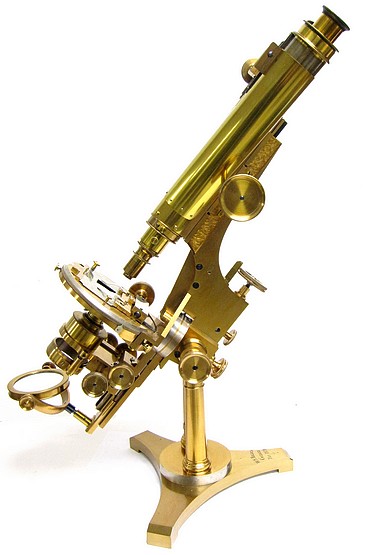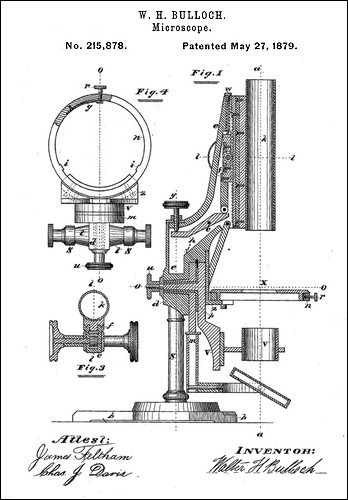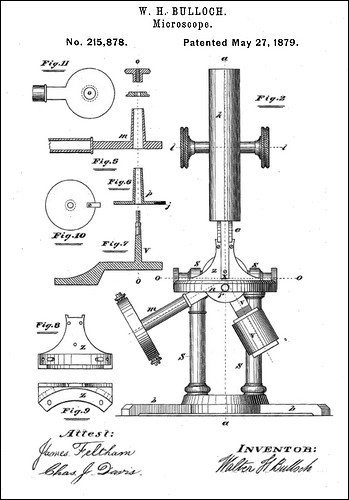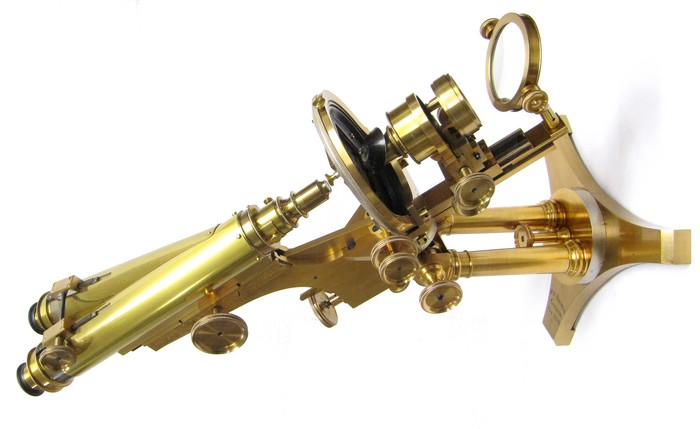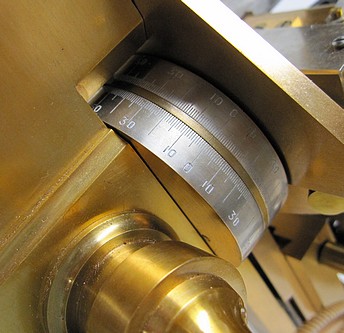
The basis of Bulloch's 1879
patent is the independent rotation of the mirror arm
and condenser arm around the point defined by the
object on the stage. The angular positions of the arms
are indicated by silvered scales.
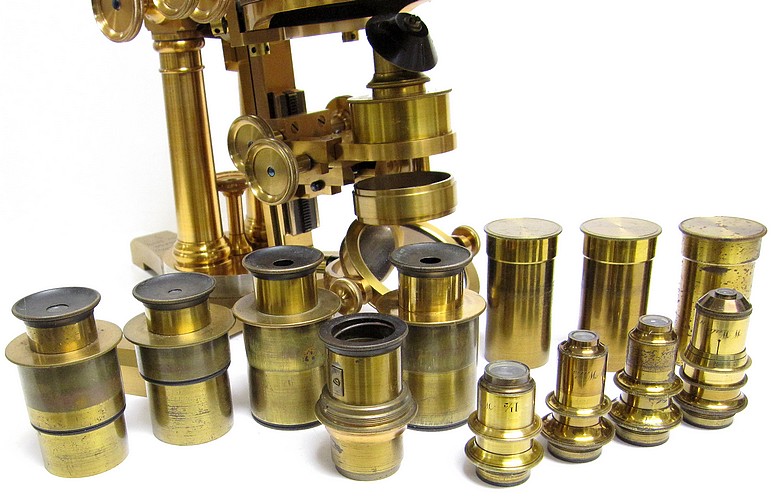
While this microscope was
purchased without its storage case, it did come with a
number of its original accessories among which were a
matched pair of eyepieces, two additional higher power
eyepieces, four objectives by W. Wales, NY ( marked 1
1/2, 2/3, 1/2, and 1/5 inch, the last with correction
collar), a safety nosepiece for monocular use, and a
sub-stage Gillett diaphragm.
When this microscope was
purchased for this collection, the original surface
finish was completely removed by a previous owner. It
has now been fully restored to its original
condition. On opening the mirror cell, an old circular piece of a
postcard was found that was used to separate the two
mirror glasses; it has a cancellation date of 1883,
thereby establishing a likely date of manufacture for
this instrument.
The following was extracted from the 1890 Bulloch catalog:
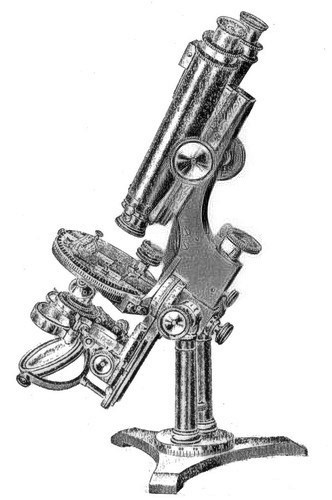
This instrument has the
same general construction as the Congress, but is a
smaller instrument. The tubes and binocular arrangement
are the same. It has the concentric, rotating and
mechanical Stage, with graduations for measuring
angles. It is also adjustable; so that it can be
accurately and perfectly controlled under a 1/50
objective. There are graduations connected with the
horizontal and vertical movements of though stage, by
which the exact position of an object can be noted and
found with more certainty than with the Maltwood
finder. The stage is sufficiently thin to admit an
angle of oblique light as high as 157 degrees. The
diameter of the stage is 4 1/2 inches, and range of
mechanical motion, 1 inch in each direction.
The sub-stage is fitted
with complete movements, for central or oblique light;
the center of which it revolves is in a plane, with the
object on the stage. It has a graduated circle, so that
the obliquity with an achromatic condenser can be
noted, and can be used at any angle under or over the
stage. The sub-stage is made in two parts. The lower,
which is adapted for the polarizer, can be swung to one
side without disturbing the condenser; and between the
upper and lower fittings of the sub-stage, there is an
adaptor that swings for the convenience of holding
diaphragms or selenites; and for the convenience of
changing accessories, the whole sub-stage is arranged
to swing on a pivot at one side of the bar. The
mirror is arranged to revolve around through the same
center as the sub-stage, but is independent until
connected. It can be moved over or under the
stage.
There is a rack and
pinion attachment for focusing the sub-stage, and a
micrometer screw movement for centering. The coarse
adjustment is by rack and pinion. The fine motion is by
a lever, moving though whole optical tube. The milled
head is graduated, reading to 1/1000 and is grooved for
use in photography. The monocular is fitted with a
safety nose-piece. The binocular has an extra safety
nose-piece and the adjustment to draw-tubes, for
perfect adaptation to individual vision, is by rack and
pinion, The instrument in mounted on a tripod base with
revolving, graduated platform, upon which the two
standards are placed, and between which the instrument
may be inclined to any angle, or placed horizontally
for drawing, or for measuring the angle of aperture.
The center on which the instrument revolves, when fixed
horizontally, is in a direct line with the object on
the stage. A Gillett diaphragm, which can be placed
under the object accompanies each instrument.
(The 1883 microscope
shown on this page differs slightly from the 1890 model
described above, in particular, with respect to the
sub-stage centering mechanism and the orientation of
the knobs for the Turrell type mechanical stage.)
